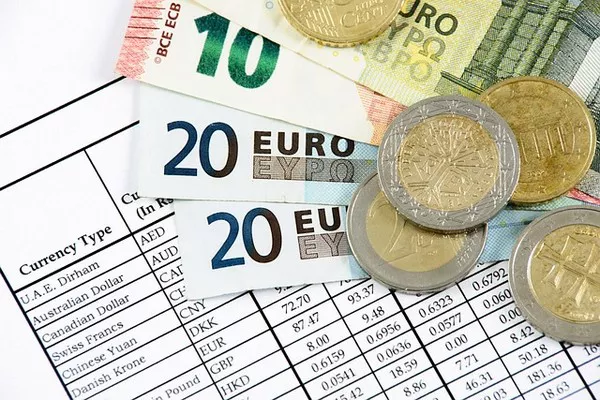In the landscape of global finance and international trade, the adoption of a common currency such as the euro by member states of the European Union (EU) has been a significant development. Finland, a member of the EU since 1995, is an integral part of the Eurozone—the group of EU countries that have adopted the euro as their official currency. This article will delve into Finland’s relationship with the euro, exploring the journey of adoption, its impact, and the broader implications within the Eurozone.
The Euro: A Common Currency
The euro, introduced on January 1, 1999, as an accounting currency, became tangible in the form of notes and coins on January 1, 2002. Its purpose was to facilitate economic integration and trade among EU member states by eliminating currency exchange costs and uncertainties associated with multiple national currencies. The euro is managed by the European Central Bank (ECB), which oversees monetary policy for Eurozone countries.
Finland’s Adoption of the Euro
Finland’s path to adopting the euro was a result of its EU membership. When Finland joined the EU in 1995, it committed to adopting the euro once it met the necessary criteria outlined by the Maastricht Treaty. These criteria, known as the convergence criteria, included factors such as low inflation, sound fiscal policies, stable exchange rates, and sustainable government debt levels.
Finland successfully met these criteria and formally adopted the euro on January 1, 2002. This transition marked a significant shift from the Finnish markka, which had been the country’s currency since 1860, to the euro. The adoption of the euro meant that Finland could benefit from enhanced economic stability and integration within the Eurozone.
The Impact of the Euro on Finland
The euro has had various impacts on Finland, both economically and symbolically. Economically, the euro has facilitated trade and investment within the Eurozone by eliminating currency conversion costs and reducing exchange rate risks. For Finnish businesses, the euro has simplified transactions and reduced uncertainties associated with fluctuating exchange rates.
Moreover, the euro has strengthened Finland’s economic ties with other Eurozone countries, promoting economic cooperation and integration. As part of the Eurozone, Finland has a say in shaping the monetary policies that affect the euro, contributing to the stability and resilience of the currency.
Symbolically, the adoption of the euro represented Finland’s deeper integration into the European Union. It signified Finland’s commitment to European unity and its alignment with broader EU objectives, including economic and political cooperation.
Finland’s Experience within the Eurozone
Since adopting the euro, Finland has been an active participant in Eurozone governance and policymaking. Finland, like other Eurozone members, adheres to common monetary policies set by the ECB to maintain price stability and support economic growth. Finnish policymakers participate in Eurozone discussions, contributing to decisions that impact the entire currency bloc.
Finland’s experience within the Eurozone has been generally positive. The euro has provided stability and predictability for Finnish businesses and consumers, fostering economic growth and investment. However, Finland, like other Eurozone countries, has also faced challenges, particularly during periods of economic downturn or global financial crises.
Finland’s Role in Eurozone Governance
As a member of the Eurozone, Finland plays a role in shaping the governance and policies of the euro. Finnish representatives contribute to discussions within Eurozone institutions, such as the Eurogroup and the ECB, influencing decisions related to monetary policy, financial stability, and economic reforms.
Finland’s voice within the Eurozone reflects its commitment to collective decision-making and solidarity among member states. The country advocates for policies that promote economic resilience, sustainable growth, and financial stability within the Eurozone.
Challenges and Opportunities
While the euro has brought numerous benefits to Finland, it has also posed challenges. Economic divergence among Eurozone members, especially during periods of economic crisis, has raised questions about the effectiveness of common monetary policies for diverse economies. Finland, along with other Eurozone countries, continues to navigate these challenges through dialogue and cooperation.
Looking ahead, Finland sees opportunities in strengthening economic integration within the Eurozone. Enhanced coordination of fiscal policies, investment in innovation and infrastructure, and addressing structural reforms are key areas of focus for Finland to maximize the benefits of Eurozone membership.
See Also The Pros and Cons of the Euro: A Comprehensive Analysis
Conclusion
In conclusion, Finland’s adoption of the euro symbolizes its commitment to European integration and economic cooperation. The euro has facilitated trade, enhanced economic stability, and promoted solidarity among Eurozone countries. Finland’s experience within the Eurozone underscores the importance of collective decision-making and policy coordination in shaping the future of Europe’s common currency.
Moving forward, Finland remains dedicated to advancing Eurozone governance, addressing economic challenges, and seizing opportunities for sustainable growth and prosperity. The euro continues to be a cornerstone of Finland’s economic and political relationship with the European Union, reflecting a shared vision of a united and prosperous Europe.


